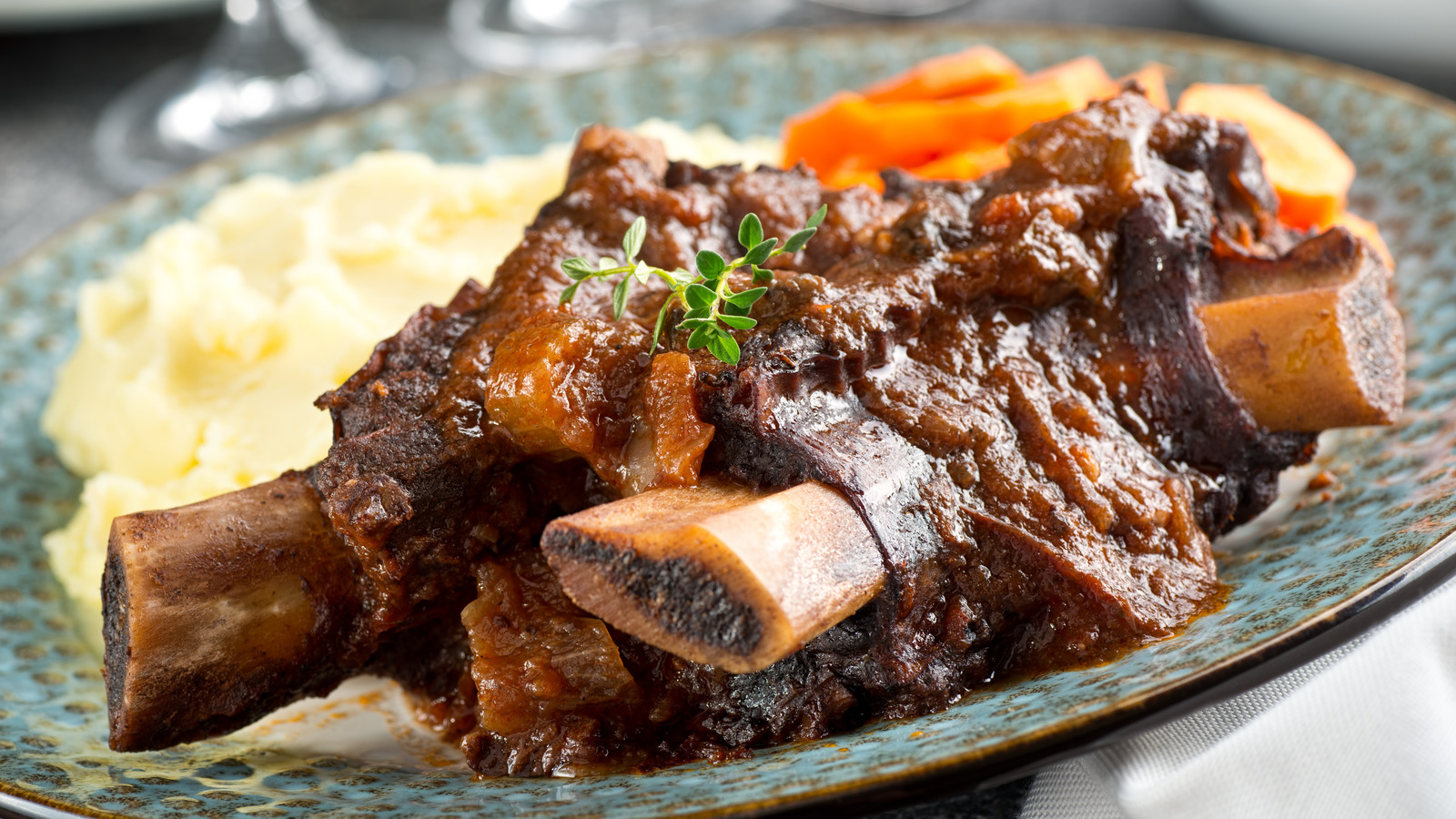
"Short ribs might look like a steak with extra bone, but they're built differently. Cut from the lower rib cage, they carry thick, durable layers of muscle, connective tissue, and fat, all woven around hefty bones. That structure means quick heat is all wrong for them. Drop them in a sizzling skillet, and the proteins in the meat will seize up, chewy and unyielding."
""Let the liquid braise the meat all day and come back to some tender, beefy heaven," Thomas suggests. It's simple, but cooking this way both tenderizes the tough ribs and concentrates flavor. The bones contribute marrow, the broth builds body, and the aromatics perfume the meat from the inside out. The best way to honor the cut is to give it time."
Short ribs require long, gentle braising rather than quick, high heat because the cut contains thick layers of muscle, connective tissue, and fat around large bones. After browning, add red wine or beef broth plus butter or beef tallow for richness, and include garlic, onion or shallots, salt, and pepper for flavor. Low, moist heat over hours converts collagen and connective tissue into silky gelatin while fat slowly renders and bastes the meat. Bones release marrow and broth builds body, while aromatics infuse internal flavor. Patience and steady braising produce tender, richly sauced short ribs.
Read at Tasting Table
Unable to calculate read time
Collection
[
|
...
]